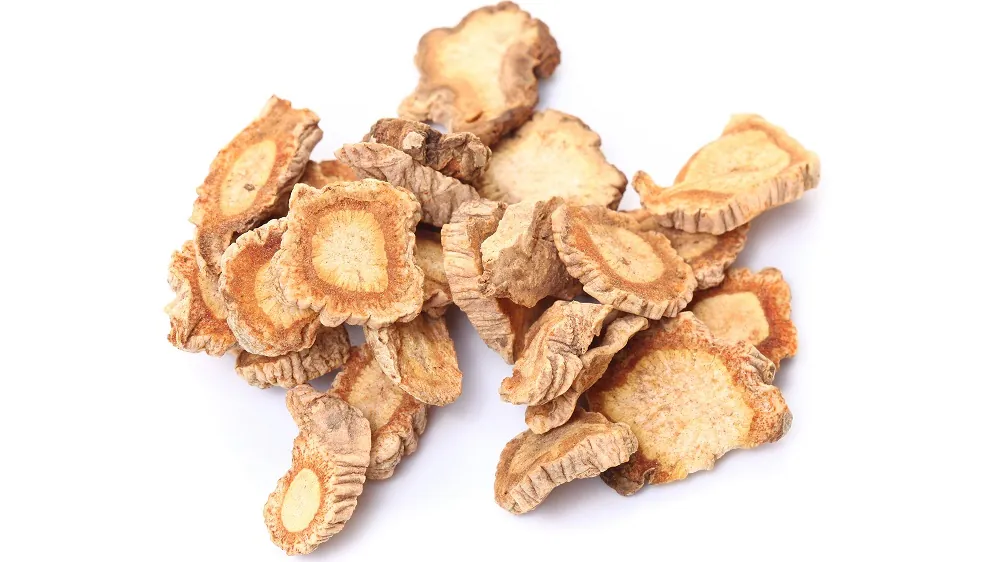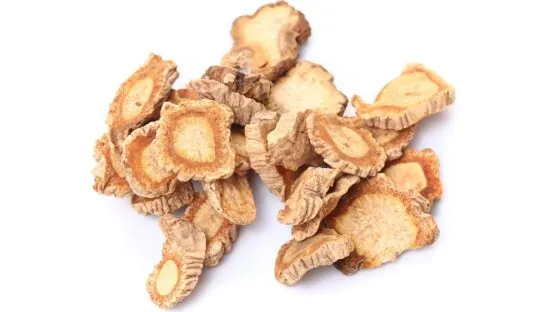A new study has identified a molecule found in Saposhnikovia root as a potent mediator of tendon regeneration in rats. The results were also replicated in human cells [1].
Aging does not spare tendons
Like with many tissues, the health of tendons, which are central to mobility and agility, hinges on the function of local stem cells. Tendon stem/progenitor cells (TSPCs) are hard at work doing maintenance, regeneration, and repair, but they experience loss of function with age. As a result, tendon ruptures, one of the leading causes of mobility impairment, heal much slower in older organisms [2].
In this new study published in Nature Bone Research, the scientists used a deep learning-based efficacy prediction system (DLEPS), which determined that prim-O-glucosylcimifugin (POG), which is found in Saposhnikovia root extract, is a molecule that can potentially promote stemness and inhibit senescence in tendon stem/progenitor cells (TSPC). Previous research has already found that POG has anticonvulsant, anti-inflammatory, and even anti-cancer effects [3], but it has not been investigated in the context of aging.
POG rescues senescence and improves healing in vitro
First, the researchers conducted in vitro experiments in a model of replicative senescence. By the twelfth passage (division), rat TSPCs showed numerous signs of senescence, and their stemness and differentiation potential were disrupted. Adding POG to the culture from the beginning significantly rescued the cells’ self-renewal and proliferative potential, allowing them to form many more colonies.
In the treated cells, several markers of senescence and aging were reduced, including β-galactosidase and p21, the apoptosis marker p53, and mRNA levels of the inflammatory cytokines Il-6, Il-1β, and TNF-α. When transferred to a medium that induces the formation of tendons (tenogenesis), POG-treated TSPCs secreted much more tenogenesis-associated markers and generated denser tendon collagen fibers when transplanted back into rats.
Works in naturally aged cells and animals
The researchers then wanted to experiment with ordinary aging rather than cellular senescence induced in a dish. As expected, tendons from 18-month-old rats showed signs of collagen degradation and increased senescence, and tendon injuries took longer to heal. TSPCs from naturally aged rats also showed many similarities to cells exhausted by replication in culture. POG proved to be almost as effective in countering natural aging in cells as it was against replicative senescence.
The researchers then administered POG to old rats for two months. Two days after the treatment stopped, the rats had their tendons injured. Seven days later, the animals from the study group showed basically the same levels of healing as young controls, and much higher than old untreated rats, with better collagen formation and lower inflammation. In uninjured old rats, POG treatment was able to alleviate collagen deterioration and cellular senescence.
As a replacement for multi-day oral administration, the researchers used nanoparticles for sustained POG release. Once injected into the site of the future injury, POG was gradually released from the nanoparticles over the course of two weeks. “Both the systemic administration of POG and the local delivery of POG nanoparticles”, the researchers wrote, “effectively enhanced the healing capacity of partial transection in aged rat tendons by enhancing rTSPC stemness, rejuvenating senescent phenotypes, and suppressing inflammatory progression.”
Increase in autophagy via mTOR downregulation
Finally, the researchers ran a series of experiments to investigate POG’s mechanism of action. RNA analysis revealed that the treatment downregulated several aging-related pathways, most notably NF-κB and mTOR. Since mTOR negatively regulates autophagy, which is also impaired in senescent cells, the researchers investigated the effect of POG on autophagy and found that POG increased autophagic flux and improved aberrant protein clearing. When the researchers knocked out a crucial autophagy-related gene, this abrogated POG’s effect, showing that POG indeed works via improvement of autophagy.
Since rodents are less than ideal models for human aging, the researchers also experimented in vitro with human TSPCs. The results were largely the same, including improvement in stemness and regeneration capacity, downregulation of mTOR, and increased autophagy. This improves the chances that POG therapy can be translated to humans.
In summary, this study employed a DLEPS to uncover a potential stemness-promoting drug, POG, which rescues aging-impaired TSPC stemness and functions by dual targeted inhibition of mTOR and nuclear factor-κB and activation of autophagy. The systemic administration of POG or the local delivery of POG nanoparticles restored structural and functional tendon regeneration in aged rats without transplanted cells (Fig. 8). These findings possess great translational potential for clinical tendon therapies.
Literature
[1] Wang, Y., Jin, S., Luo, D., He, D., Yu, M., Zhu, L., … & Liu, Y. (2023). Prim-O-glucosylcimifugin ameliorates aging-impaired endogenous tendon regeneration by rejuvenating senescent tendon stem/progenitor cells. Bone Research, 11(1), 54.
[2] Ackerman, J. E., Bah, I., Jonason, J. H., Buckley, M. R., & Loiselle, A. E. (2017). Aging does not alter tendon mechanical properties during homeostasis, but does impair flexor tendon healing. Journal of Orthopaedic Research, 35(12), 2716-2724.
[3] Gao, W., Zhang, X., Yang, W., Dou, D., Zhang, H., Tang, Y., … & Sun, T. (2019). Prim-O-glucosylcimifugin enhances the antitumour effect of PD-1 inhibition by targeting myeloid-derived suppressor cells. Journal for immunotherapy of cancer, 7, 1-15.



